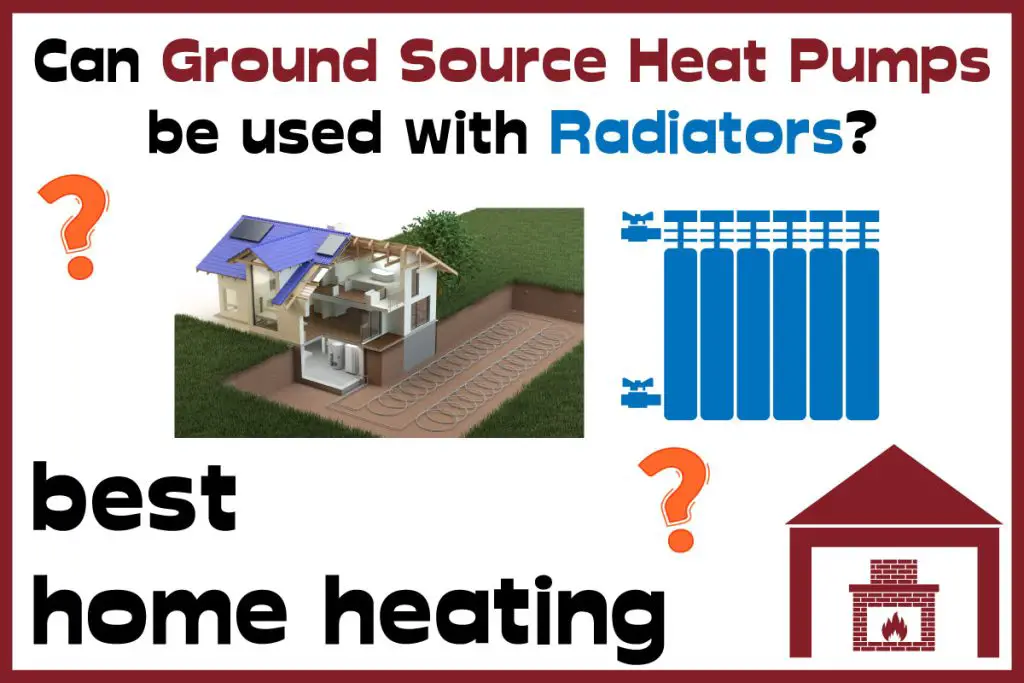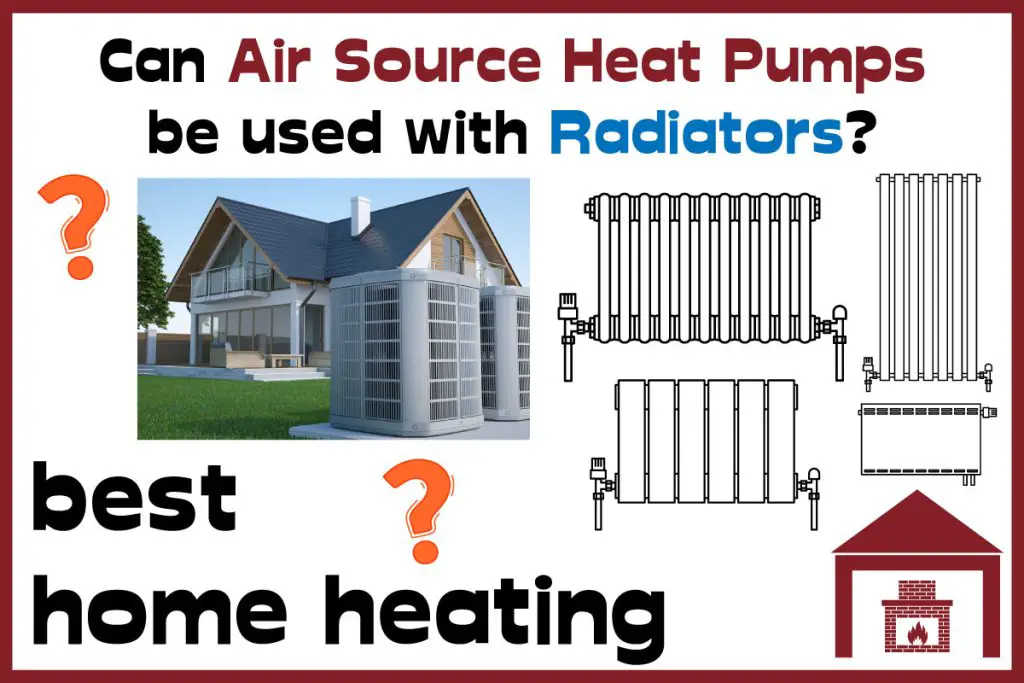Whether you are designing a new kitchen or renovating an old one, it’s important to choose the right heating system to heat your kitchen. There are several methods for heating a kitchen, and all of these options have their advantages and disadvantages.
| Heating Device | Pro(s) | Con(s) |
| Underfloor Heating | Offers great comfort. Very safe. Highly Energy efficient. | Expensive Installing water underfloor heating is very labor Intensive. |
| Radiators | Compatible with other heating systems like Heat Pumps. Fast Warm Up Time. Easy Installation. | Higher Running costs (electric). Bulky and takes up ample space in the Kitchen. |
| Plinth Heaters | Saves space. Requires minimal Maintenance. Cheap to run. | Heat Distribution is not always even. Can be expensive to run(electric) |
| Skirting Board Heating | Doesn’t take up space. Even heat Distribution. | It is not suitable for Kitchens with low Insulation. Heat output may be insufficient. |
| Range | Very versatile as it can be used for cooking, central heating, and to heat water. | Very expensive installation |
| Electrically Heated Glass | Very low energy consumption. Little to no maintenance. | Very Expensive. |
| Stove | Cheap. Fast warm up time. | Less ‘green’ / environmentally friendly |
In this post, we are going to discuss pretty much everything you need to know about the methods of heating a kitchen and help you make an important decision. Hopefully, here you will find answers to some of your nagging questions.

Underfloor Heating
Underfloor heating (UFH) is regularly referred to as the best method of heating a kitchen. As the term suggests, underfloor heating is installed beneath the floor surface. There are two types of underfloor heating: Water-based/Hydronic and Electric, also known as wet and dry systems. Unless you have a very small kitchen, UFH may be the best option for you.
In a Hydronic system, pipes are installed under the floor, and hot water runs through the pipes. The water is heated by a central heating system or heat pump.
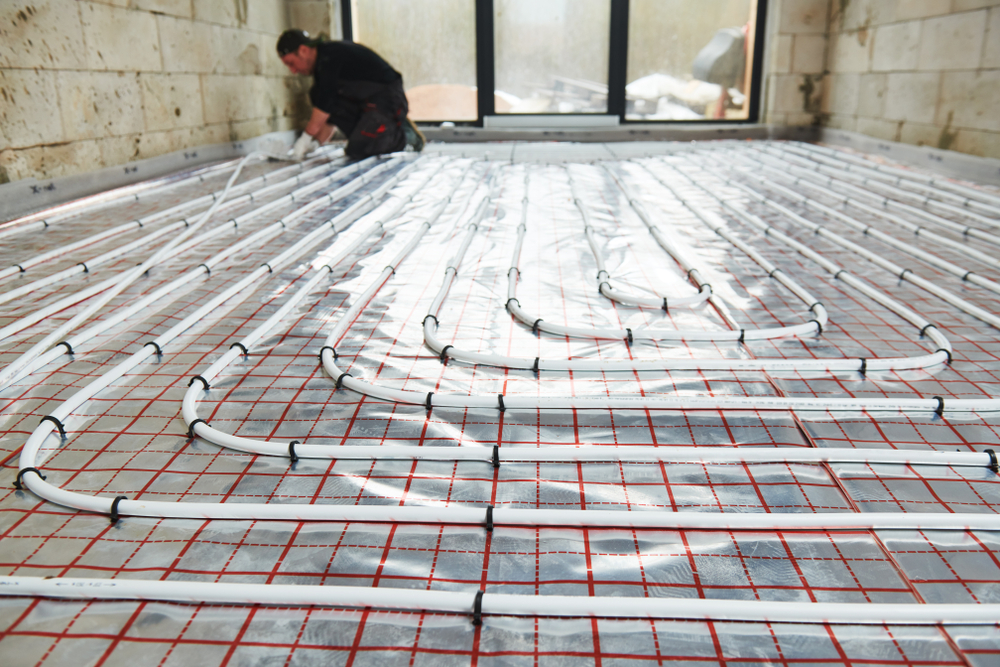
An Electric underfloor heating system works differently. Electric heating mats, made of durable heating cables, are laid under the floor tiles, and the temperature of the mats is regulated by a thermostat.
In recent decades, both types of UFH systems have become very popular, in part because they remain invisible but keep your kitchen comfortably warm. The system turns the entire floor into a radiator, and the heat is distributed evenly.
The costs of installing and running UFH depend on the type of system you choose. To some extent, the costs also depend on some other factors such as the level of insulation in your kitchen and the price of energy.
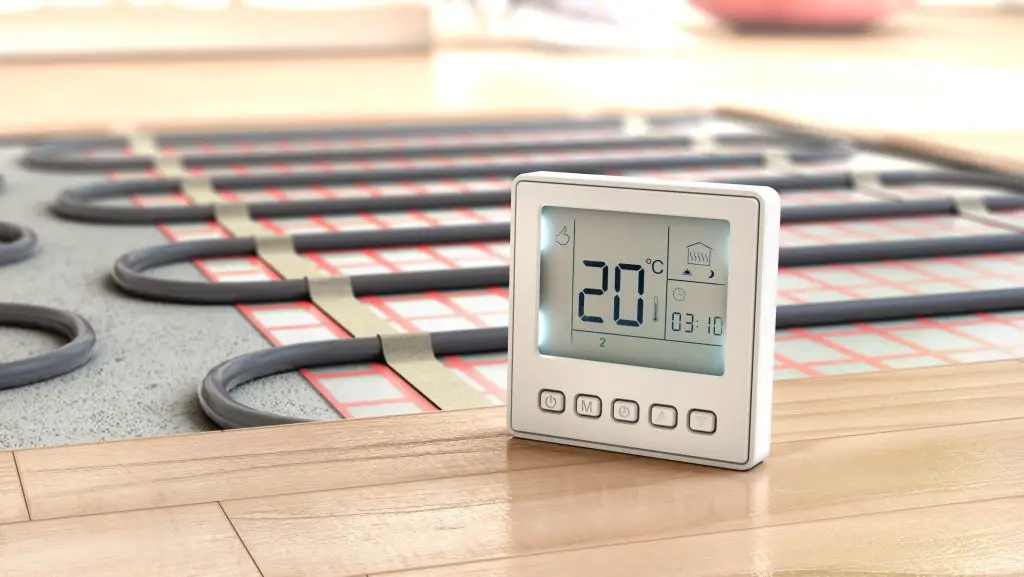
For a renovation project, Wet UFH costs $150-$220 and electric UFH costs $70-$100 per square meter. And if you have a new build project, a wet system will cost $140-$160 and an electric system will cost $60-$90 per square meter. As you see, the installation cost of wet UFH is remarkably higher than that of dry UFH.
However, when it comes to the running cost, a wet system is cheaper than a dry one. A standard heating mat that runs for six hours costs less than 10 cents per square meter. For a 6m²-kitchen that requires heating for 2 hours a day, the monthly cost of an electric UFH is only around $7.
Wet UFH is remarkably less expensive to run. The system uses up to 40% less energy than conventional radiators to produce the same amount of heat.
Compared to other methods of heating, both electric and hydronic underfloor heating systems are very energy efficient. While wet UFH is more energy efficient than dry UFH, the latter is a great option for many homes.
The best thing about underfloor heating is that it does not take up space in your kitchen, because the entire floor surface turns into a source of radiant heat.
Of course, UFH will raise the height of your kitchen floor. The depth of a typical Wet UFH system is around 150mm. Electric UFH, in contrast, requires only 50-100mm.
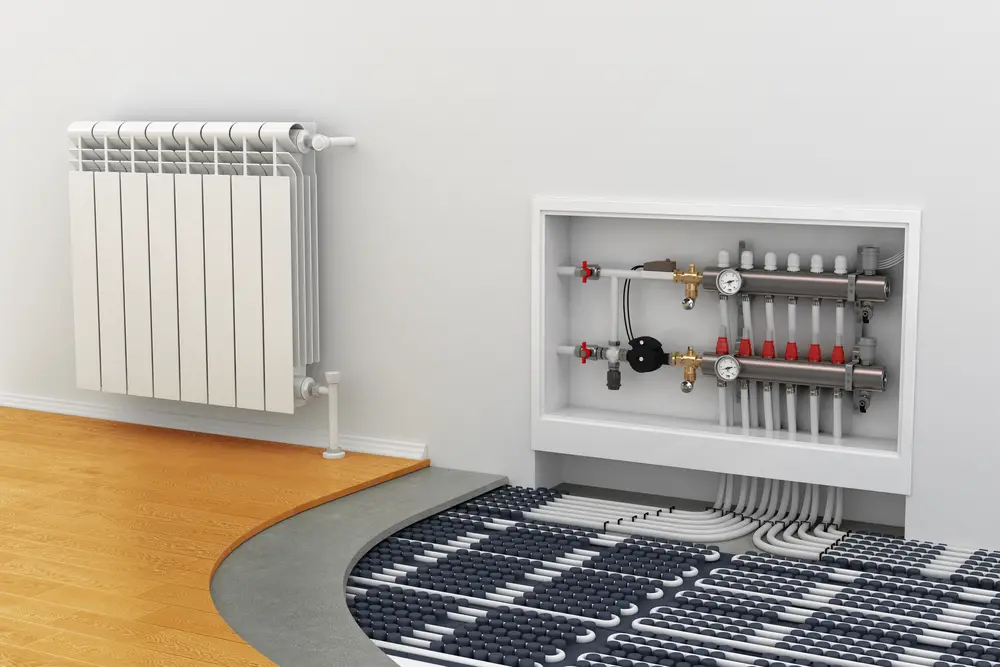
While UFH is an appealing way to heat a kitchen, the option has some drawbacks as well, just like all other heating methods. It has a higher initial cost than most other methods of heating.
Wet underfloor heating is not a fast system; it takes up to 3 hours to sufficiently warm up. You cannot install some fixtures and place some furniture, particularly flat-bottomed items, on underfloor heating. That means, UFH to some extent restricts the way you set up your kitchen.
Pros and Cons of Installing Underfloor Heating in a Kitchen
| Pros | Cons |
| It offers great comfort. When it’s freezing out there, you can comfortably walk barefoot in the kitchen. | High initial cost. |
| Easy installation, particularly if you choose electric UFH. If you have the time and resources, you can even take it as a DIY project | You can’t have UFH under your Refrigerator or other fixed furniture. |
| Remarkably more energy efficient than most other methods of heating a kitchen. | Wet UFH takes up to 3 hours to reach the desired temperature. |
| It adds value to your property. If you want to sell your home, many buyers will show interest just because there is underfloor in the kitchen. | |
| Very safe. There are no sharp edges, and no risk of burning. |
You can learn a lot more about underfloor heating at our dedicated page here.
Radiators
Installing radiators is another effective way to heat a kitchen. Radiators are quick to respond, work with both central heating systems and heat pumps, and there are electric models. A radiator can make your kitchen comfortably warm in just 20-30 minutes.
Radiators are more prevalent than other methods of heating, in part of their ease of installation.
A radiator works by transferring heat via convection to the surrounding air. The system basically draws cool air in, warms it, and then passes it.
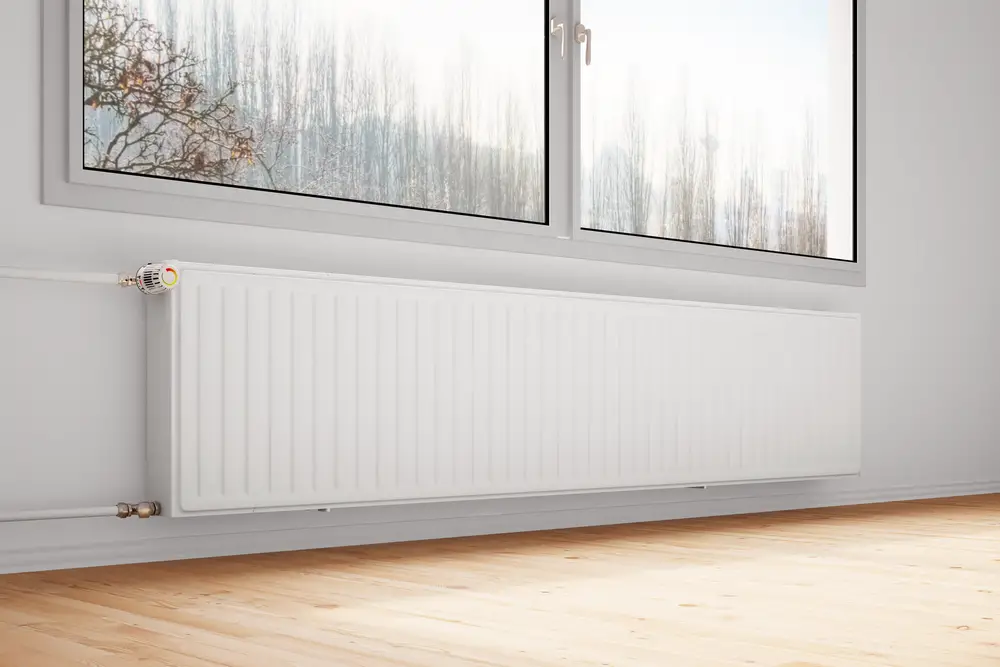
There are several different types of radiators: single panel, double panel, vertical, horizontal, and column radiators.
Prices vary wildly, depending on the type and size of the unit you choose. For example, a column radiator can be as cheap as $100 while a high-quality freestanding electric radiator can cost up to $1600. You may find a fairly good unit for a medium-sized kitchen for less than $500.
One of the best things about radiators is that they are pretty easy to install. A professional mechanic can install a radiator in just 2-3 hours. If you want to do it yourself, the project may take a bit longer, but it is doable. A professional mechanic may charge $150-$200 for installing a radiator.
It is somewhat tricky to figure out the cost of running a radiator because the cost depends on several different factors. For a rough estimate, running a modern, electric radiator with sophisticated features will cost less than $20 per month.
The running cost can be significantly lower or higher depending on the price of electricity in the country you are living in.
While radiators are energy efficient, not all models are the same. They are made of several different materials such as aluminum, cast iron, copper, and brass. Of them, aluminum radiators are the most energy efficient, using 15% less energy than radiators made of other metals.
With that said, radiators in general are not as energy efficient as underfloor heating, because the latter is usually paired with heat pumps, which are remarkably more efficient and environmentally friendly than conventional boilers.
Vertical radiators are the best for small kitchens. If your kitchen is really small, however, underfloor heating is a better option than radiators. Also, it is important to remember that radiators do not distribute heat as evenly as underfloor heating, and tend to attract dust.
If you prefer radiators, you can cover them up with radiator covers. They help make your kitchen look less cluttered.
Pros and Cons of Installing Electric Radiators in Kitchens
| Pros | Cons |
| Efficient Compatible with heat pumps. | High running costs, especially if you choose an electric radiator. |
| Fast warm up time. An electric radiator can heat up your kitchen in a few minutes | Radiators take up space in your kitchen especially horizontal radiators. |
| Easy installation – If you are not directly wiring the radiator to the mains, you do not even need the help of an electrician. | |
| Zone heating- If you want heating only in a particular zone in the kitchen, a radiator is definitely a good option. |
Plinth Heaters
A Plinth heater is a small heater that is usually fitted into the kickboard or plinth underneath a kitchen unit. Plinth heaters are used in kitchens, shops, restaurants, cinema rooms, and offices.
The best thing about a plinth heater is that it remains virtually hidden. Unlike radiators, plinth heaters do not take up wall space. They fit neatly under kitchen plinths and most types of furniture, leading to increased space for movement and storage.
The mechanism of a plinth heater is similar to that of a warm water radiator. When your central heating is active, hot water runs through the heater’s fins. A built-in fan, which gets activated by a sensor when the central heating is on, pushes the warm air into the room. When the central heating is not active, the sensor automatically switches the fan off.
Most plinth heaters come with a boost mode that allows you to raise the setting of the fan when you need to heat the room quickly. In warm weather, the fan-only mode can be used to circulate cool air in the room.
While plinth heaters are not as commonly used as radiators, they can be surprisingly more convenient than radiators in many cases.
Plinth heaters can be hydronic or electric. There are also duo models, which can be paired with your central heating and can be connected to a power outlet when the central heating is not active.
Usually, plinth heaters are professionally installed. If you choose a hydronic plinth heater, the installation process is more complicated, so you may not take it as a DIY project.
The price of a plinth heater is usually within the range of $200 and $300. These devices are also inexpensive to run. If you use a hydronic plinth heater 5 hours a day, the running will be about 10 cents per day.
It is to be noted here that hydronic models are more energy efficient than electric models. A hydronic model consumes about 25% less electricity than a conventional radiator to produce the same amount of heating.
One disadvantage of a plinth heater is that it does not distribute heat as evenly as underfloor heating does. In fact, in terms of even distribution of heat, underfloor heating has an edge over almost all other alternatives.
Pros and Cons of using a Plinth Heater in a Kitchen
| Pros | Cons |
| It helps saves space. | It distributes heat less evenly than underfloor heating. |
| Very convenient for a small kitchen. | Electric models can be expensive to run. |
| Cheap to run. | |
| Minimal maintenance |
Range cookers
Central heating range cookers are expensive but popular for their performance, durability, and reliability. A Rayburn range cooker is used for multiple purposes: cooking, heating, and hot water. It can run multiple radiators, producing enough heating for your entire house.
Should you choose a central heating range cooker for heating your kitchen? Well, it depends on whether you are willing to replace your existing cooker with a range cooker in addition to keeping your kitchen, and possibly your entire home, warm.
There are both solid fuel and electric models, and the newer models come with sophisticated features that make the ranges remarkably more energy efficient than the older ones. A range cooker will take up some space in your kitchen, but it will also replace your existing kitchen.
Pros and Cons of using a Range Cooker for Heating your Kitchen
| Pros | Con(s) |
| It is very versatile as it can be used for cooking, central heating, and to heat water. | Very expensive. |
| You will use it to cook amazing succulent food, a brilliant investment if you value good food |
Skirting Board Heating
Skirting heating is another great way to heat a kitchen with inadequate floor or wall space. It is a heating system that is fitted in a skirting board, but the system is also available in a “plinth” version.
Skirting boards are used to improve the aesthetics of a home by hiding the meeting point of the floor and the wall. It is only in recent years that the boards have been fitted with heating systems. A skirting board that is used for heating looks exactly the same as a conventional one used for aesthetic purposes.
There are two types of skirting board heating systems: hydronic and electric—just like radiators. The technologies are also the same as those of radiators. Hydronic systems work the same way as warm water radiators, and electric systems function like electric radiators.
Skirting board heating distributes heat more evenly than radiators do, and in this sense, the technology shares feature with underfloor heating. If you already have skirting boards in your kitchen, skirting board heating is the best option for you.
Given the fact that the heating system is fitted into skirting boards, it will not take up additional space in your kitchen.
For installation, skirting board heating costs around $40 per linear meter. If you want to get an electric system, your electrician will charge around $250 per day. For a wet system, you will have to hire a plumber, who will charge $300-$400.
One notable downside of skirting board heating is that it may not be enough to heat a large kitchen.
Pros and Cons of Skirting Board
| Pros | Cons |
| Remains hidden in skirting boards, so does not take up space in your kitchen. | It may not produce sufficient heat for a large kitchen. |
| It ensures even heat distribution | It is not suitable for a kitchen with poor insulation |
| It is Energy efficient. |
Electrically Heated glass
Installing electrically heated glass is another smart and clean way to heat a kitchen. A transparent electrically conductive coating is applied to the glass. As electricity passes through the coating, it generates heat. At one point, the glass starts radiating heat.
Heated glass is not a widely used method of heating, but it is quickly gaining popularity.

The installation is rather expensive: around $1000 per square meter. However, the running costs are low—about 50% of running conventional electric heating methods such as electric radiators and underfloor heating. So, the technology is pretty energy-efficient. Heated glass provides smooth radiant heat, keeping your kitchen comfortably warm.
Pros and Cons of Installing Heated Glass in a Kitchen
| Pros | Con(s) |
| Low energy consumption | It is very expensive. |
| Little to no maintenance | |
| Invisible heating source |
7. Stoves
Using a wood stove is a convenient way to heat a kitchen, especially for those who have easy access to firewood. Stoves have a bad rap for producing greenhouse gasses, but there’s a catch: wood is actually a renewable resource—unlike fossil fuels.
If you have access to different types of fuels, you may consider getting a multi-fuel stove. Newer models are very easy to use and require minimal maintenance.
Installing a wood stove will cost anywhere between $500 and $5000. For a wood-burning stove with no sophisticated features, expect to spend $500-$1000.

A wood-burning stove has a rustic, romantic appeal. There is something satisfying about wood heat. However, if you do not like the idea of burning solid fuels, an electric stove may be the right choice for you. It’s pretty convenient for a kitchen with limited space.
Pros and cons of using a Stove to Heat a kitchen
| Pros | Cons |
| A low-cost solution for those who have easy access to firewood. | Solid fuel models are not environmentally friendly. |
| It will heat up your kitchen quickly. | It may not be convenient for those who enjoy a modern lifestyle. |
How to Reduce Heat Loss In Your Kitchen
Heat loss occurs when heat escapes from your kitchen through the roof, windows, walls, and floor. If your kitchen loses too much heat, the efficiency of your heating system will suffer, and that means you will end up spending more to heat your kitchen.
To reduce heat loss, first of all, you have to make sure your kitchen has sufficient insulation. In general, new buildings have good insulation. Older buildings that were constructed before the 1970s tend to have poor insulation.
If you are living in an old building, you can consider laying insulation layers on your existing floor surfaces. Also, apply insulation to the walls, roof, windows, and doors.
Heat can escape through unused chimneys. If there is a chimney in your kitchen, consider installing a removable chimney balloon to reduce heat loss.
If there is an extraction fan in your kitchen, avoid leaving it on unnecessarily. Consider investing in a timed extractor fan. It will automatically shut off, leading to reduced heat loss.
A radiator with trapped air in it may not work efficiently. In such a case, bleed the radiator. Also, if there are disused vents in your kitchen, seal them up to stop heat from escaping.
Summary
We have discussed all possible ways to heat a kitchen, and we hope you are now better prepared to make an informed decision. Your decision should be determined by your personal preference, the size of your kitchen, and your budget.
| Heating Device | Pro(s) | Con(s) |
| Underfloor Heating | Offers great comfort. Very safe. Highly Energy efficient. | Expensive Installing water underfloor heating is very labor Intensive. |
| Radiators | Compatible with other heating systems like Heat Pumps. Fast Warm Up Time. Easy Installation. | Higher Running costs (electric). Bulky and takes up ample space in the Kitchen. |
| Plinth Heaters | Saves space. Requires minimal Maintenance. Cheap to run. | Heat Distribution is not always even. Can be expensive to run(electric) |
| Skirting Board Heating | Doesn’t take up space. Even heat Distribution. | It is not suitable for Kitchens with low Insulation. Heat output may be insufficient. |
| Range | Very versatile as it can be used for cooking, central heating, and to heat water. | Very expensive installation |
| Electrically Heated Glass | Very low energy consumption. Little to no maintenance. | Very Expensive. |
| Stove | Cheap. Fast warm up time. | Less ‘green’ / environmentally friendly |
In most cases, underfloor heating is the best option. However, depending on your particular needs, any of the other options may serve your purpose better. An experienced technician can help you choose the right option and walk you through the entire process.

